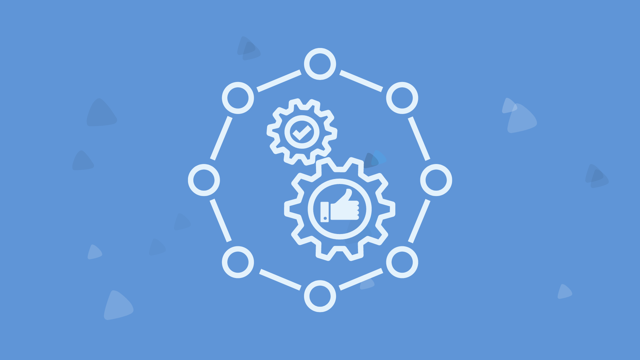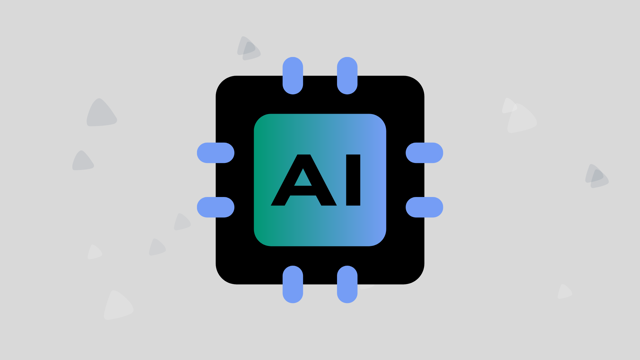Accounts Payable Processing: Why is it Such a Long Process?
2024-07-16
Describes why the manual AP process is such a long process.
Accounts Payable Processing: Why is it Such a Long Process?
Accounts payable (AP) processing is a critical function within any organization, involving the management and handling of outgoing payments to vendors and suppliers. Despite its importance, it is often regarded as a lengthy and cumbersome process. This article will explore the reasons behind the prolonged nature of accounts payable processing, the steps involved in manual AP processes, the problems associated with these manual methods, and how technology, particularly Dost AI, can revolutionize and expedite this essential business function.
Steps in Manual AP Processing
Initial Invoice Receipt
The journey of an invoice through the accounts payable department begins with its receipt. In a manual process, invoices can arrive via various channels, including mail, email, fax, or even hand delivery. Each invoice must be logged and tracked to ensure it doesn't get lost or overlooked. This initial step sets the stage for a lengthy and detail-oriented process.
Invoice Verification
Once an invoice is received, the next step is verification. This involves checking the invoice details against purchase orders (POs) and delivery receipts. The AP team must ensure that the quantities, prices, and terms match what was agreed upon during the procurement process. Discrepancies can lead to delays as they require further investigation and communication with the vendor or internal departments.
Coding and Data Entry
After verification, the invoice needs to be coded for proper accounting. This means assigning the correct account codes to each line item on the invoice. In a manual system, this step is prone to human error, leading to potential misclassification of expenses. The data from the invoice is then entered into the accounting system, which can be time-consuming, especially for companies dealing with a high volume of invoices.
Approval Workflow
Invoices typically need approval from various levels of management before they can be paid. This involves routing the invoice through the appropriate channels, often requiring physical signatures or email confirmations. The approval process can be delayed by busy schedules, absence of approvers, or discrepancies that need clarification.
Payment Processing
Once approved, the invoice moves to the payment processing stage. This involves selecting the payment method, preparing the payment (e.g., writing checks or setting up electronic transfers), and ensuring that payments are made on time to avoid late fees and maintain good vendor relationships. Manual payment processing is susceptible to delays due to banking cut-off times, errors, and the need for multiple reviews.
Record Keeping and Reconciliation
The final step in manual AP processing is maintaining accurate records and reconciling accounts. All transactions must be documented, filed, and matched against bank statements and accounting records. This ensures that the company's financial statements are accurate and up to date. Reconciliation can be a labor-intensive task, especially when dealing with a high volume of transactions and potential discrepancies.
Problems with Manual AP Processes
Time-Consuming and Inefficient
Manual AP processing is notoriously time-consuming. Each step, from invoice receipt to payment and reconciliation, requires significant human intervention, which slows down the entire process. This inefficiency can lead to delayed payments, missed discounts for early payments, and strained vendor relationships.
Prone to Errors
Human error is a significant risk in manual AP processing. Mistakes in data entry, coding, and verification can lead to incorrect payments, duplicate payments, or missed payments. These errors can be costly and require additional time and resources to resolve.
Lack of Visibility and Control
Manual processes often lack real-time visibility into the status of invoices and payments. This can make it difficult for management to have an accurate understanding of the company's financial liabilities at any given time. Additionally, the lack of centralized control can lead to inconsistencies and difficulties in auditing and compliance.
High Operational Costs
The labor-intensive nature of manual AP processing results in higher operational costs. Companies must allocate significant resources to manage and oversee the process, including hiring and training staff, maintaining paper records, and dealing with errors and exceptions. These costs can add up and reduce overall profitability.
Limited Scalability
As a company grows, the volume of invoices and payments increases. Manual AP processes are not easily scalable and can become a bottleneck, hindering the company's ability to expand and operate efficiently. This limitation can force businesses to either invest heavily in additional resources or risk falling behind on their financial obligations.
How Can You Shorten This Process?
Implementing Automation
One of the most effective ways to shorten the AP process is through automation. By leveraging advanced software solutions, companies can streamline each step of the process, from invoice receipt to payment and reconciliation. Automation reduces the need for manual intervention, speeds up processing times, and minimizes the risk of errors.
Utilizing Optical Character Recognition (OCR)
OCR technology can significantly expedite the invoice data capture process. By scanning and digitizing paper invoices, OCR extracts relevant information and automatically populates it into the accounting system. This reduces the need for manual data entry and ensures that invoice details are accurately captured.
Integrating with ERP Systems
Integrating AP processes with Enterprise Resource Planning (ERP) systems can enhance efficiency and visibility. ERP systems provide a centralized platform for managing all financial transactions, allowing for real-time tracking and reporting. This integration ensures that all relevant data is synchronized and accessible, reducing delays and improving decision-making.
Streamlining Approval Workflows
Automating approval workflows can eliminate bottlenecks caused by manual routing and approval processes. With automated workflows, invoices can be routed to the appropriate approvers based on predefined rules and criteria. Approvers can review and approve invoices electronically, even from remote locations, speeding up the overall process.
Adopting Electronic Payments
Switching to electronic payment methods, such as ACH transfers, wire transfers, or virtual credit cards, can significantly reduce payment processing times. Electronic payments are faster, more secure, and provide better tracking and reconciliation compared to traditional paper checks.
Enhancing Supplier Communication
Improving communication with suppliers can also help shorten the AP process. Establishing clear expectations, setting up electronic invoicing, and providing suppliers with self-service portals can reduce the time spent on resolving discrepancies and inquiries. Suppliers can submit invoices electronically, track payment status, and access payment history, leading to fewer delays and misunderstandings.
The Role Dost AI Plays in Accounts Payable Processing
Introduction to Dost AI
Dost AI is a cutting-edge solution designed to revolutionize accounts payable processing. Leveraging artificial intelligence and machine learning, Dost AI automates and optimizes each step of the AP process, from invoice capture to payment and reconciliation. By utilizing advanced algorithms and intelligent automation, Dost AI addresses the pain points of manual AP processing and delivers significant efficiency gains.
AI-Powered Invoice Capture and Data Entry
One of the standout features of Dost AI is its ability to capture and process invoices with unparalleled accuracy. Using AI-powered OCR, Dost AI extracts relevant data from invoices, such as vendor details, line items, and totals, and automatically populates the accounting system. This eliminates the need for manual data entry, reduces errors, and accelerates the invoice processing time.
Intelligent Approval Workflows
Dost AI offers intelligent approval workflows that streamline the routing and approval of invoices. By analyzing historical data and patterns, Dost AI can identify the appropriate approvers and route invoices accordingly. Approvers receive notifications and can review and approve invoices electronically, ensuring a swift and efficient approval process.
Real-Time Analytics and Insights
With Dost AI, companies gain access to real-time analytics and insights into their AP process. The platform provides dashboards and reports that offer a comprehensive view of invoice statuses, payment timelines, and cash flow. This visibility allows for better decision-making, proactive management of financial liabilities, and improved forecasting.
Seamless Integration with Existing Systems
Dost AI seamlessly integrates with existing ERP and accounting systems, ensuring a smooth transition from manual to automated processes. The integration allows for the synchronization of data, eliminating the need for duplicate entries and ensuring consistency across all financial records. This compatibility ensures that companies can leverage their existing infrastructure while benefiting from the advanced capabilities of Dost AI.
Enhanced Fraud Detection and Compliance
Fraud detection and compliance are critical concerns in AP processing. Dost AI incorporates advanced algorithms that analyze transaction patterns and identify potential fraud or compliance issues. By flagging suspicious activities and providing detailed audit trails, Dost AI helps companies mitigate risks and ensure adherence to regulatory requirements.
Frequently Asked Questions (FAQs)
Conclusion
Accounts payable processing is undeniably a lengthy and complex process, especially when handled manually. The numerous steps involved, coupled with the potential for errors and inefficiencies, contribute to the prolonged nature of AP processing. However, by embracing automation and advanced technologies like Dost AI, companies can significantly shorten and streamline this critical function.
Dost AI revolutionizes accounts payable processing by automating invoice capture, data entry, approval workflows, and payment processing. With real-time analytics, seamless integration, and enhanced fraud detection, Dost AI addresses the pain points of manual AP processes and delivers substantial efficiency gains.
By adopting Dost AI, businesses can reduce operational costs, improve accuracy, enhance visibility, and scale their AP processes effectively. In doing so, they can free up valuable resources, strengthen vendor relationships, and maintain
Más artículos que podrían interesarte
Digitalización de facturas: Más allá del papel, hacia la eficiencia total - Dost
Digitalización de facturas: optimiza procesos, reduce errores y mejora la eficiencia total de tu empresa. Descubre cómo ir más allá del papel hacia la transformación digital.
2024-07-31 • Eric Alcantud | Marketing @ Dost AI
Subvencionado por el CDTI
Soluciones
Iniciar sesión






